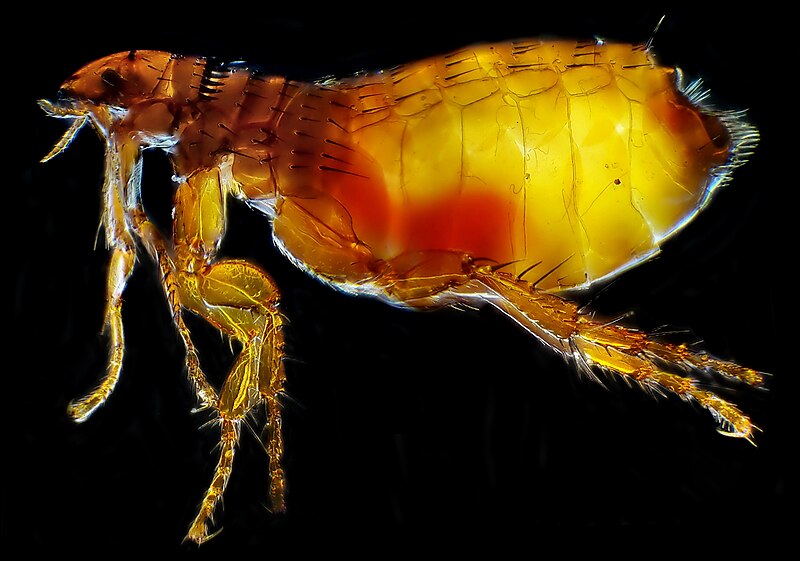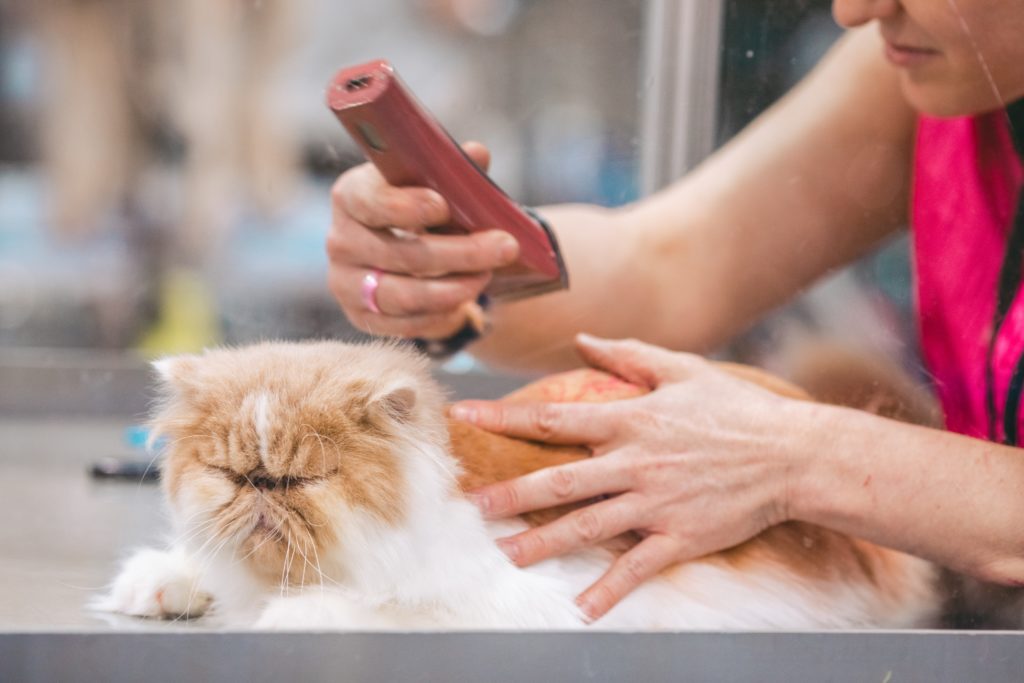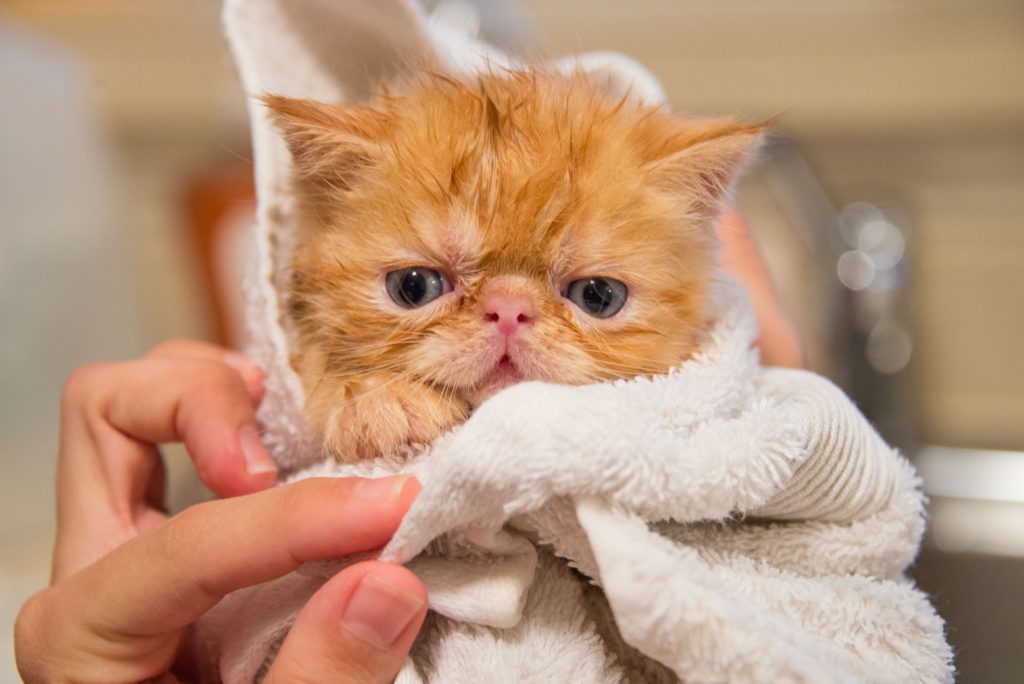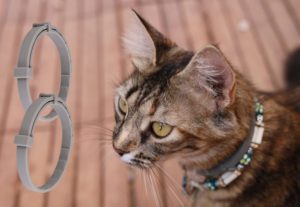If you see your cat scratching more then usual and seem having lots of itches. It is possible that your cat is dealing with a flea issue. Lot of time many cat owners, in that situation decided to shave their cat. But the questions is: Can you shave a cat to get rid of fleas?
From my experience being a long time cat owner. I have gone through similar situation. I also tried shaving my cat when she is infested with fleas. Guess what! It didn’t work. So, in this article, we will be discussing about this topic and explore whether shaving a cat is a viable solution for flea problems.
Can I Shave a Cat to Get Rid of Fleas?

Shaving your cat will not get rid of fleas as it does not kill or remove the fleas that are already on your cat’s skin or in its environment. In fact, shaving your cat may make it easier for fleas to bite your cat’s skin and cause more irritation and infection. Even veterinarians advise against shaving cats for flea control.

Why shouldn’t you shave your cat for fleas?:
1. Stress and trauma: Shaving your cat with fleas may be a stressful and traumatic experience for your cat, as it involves restraining and clipping your cat’s fur, which may cause fear, anxiety, or pain. Your cat may also feel insecure or uncomfortable after losing its fur, which may affect its behavior or mood.
2. Skin irritation or injury: Shaving your cat with fleas may cause skin irritation or injury to your cat, as it may expose the skin to cuts, nicks, burns, or infections. Your cat may also scratch or bite the shaved areas, which may worsen the condition or lead to secondary infections.
3. Sunburn: Shaving your cat with fleas may expose the skin to sunburns, especially if your cat goes outside or stays near a window. Sunburns can cause redness, inflammation, blistering, or peeling of the skin, which can be painful and damaging to your cat.
4. Hypothermia: Shaving your cat with fleas may expose the skin to hypothermia, especially if your cat lives in a cold climate or stays in a drafty area. Hypothermia can cause low body temperature, shivering, weakness, lethargy, or even death.
What are the alternate to shave your cat for fleas?
So now shaving its fur will not get rid of fleas. And the questions remains, so what are the other options to get rid of fleas from cat?
The best way to deal with fleas on cats is to prevent them from infesting your cat and your home in the first place.
Steps to prevent fleas on cats:
1. Use a flea control product for cats regularly. There are many types of flea control products available for cats, such as spot-on treatments, flea collars, flea shampoos, oral medications, or natural remedies. These products work by killing or repelling fleas and preventing them from laying eggs. You should consult with your veterinarian before choosing a flea control product for your cat and follow the instructions carefully.
2. Keep your cat indoors or limit its exposure to outdoor environments where fleas may be present. If your cat goes outside, you should check its fur for fleas and flea dirt regularly and comb it with a flea comb to remove any fleas or eggs.
3. Wash your cat’s bedding and toys frequently in hot water and dry them in high heat to kill any fleas or eggs. You should also vacuum your carpets, rugs, furniture, and floors regularly and dispose of the vacuum bag or filter in a sealed plastic bag.
4. Treat your home environment with a flea spray or fogger that contains an insect growth regulator (IGR) to prevent flea eggs and larvae from developing into adult fleas. You should follow the directions on the label and keep your cat away from the treated areas until they are dry.
5. Use natural remedies for flea prevention in cats if you prefer a more holistic approach. Some natural remedies that may help repel fleas include apple cider vinegar, lavender oil, lemon juice, rosemary, or diatomaceous earth. However, you should be careful when using these remedies as some cats may be sensitive or allergic to them. You should also consult with your veterinarian before using any natural remedies for flea prevention in cats.
How Do Groomers Get Rid of Fleas?
Groomers can help get rid of fleas on cats by using professional tools and techniques. Those tools are are designed to remove fleas and flea dirt from the fur and skin. Some of the methods that groomers may use include:
- Bathing your cat with a flea shampoo that contains an insecticide that kills fleas on contact. The shampoo also helps loosen and wash away any dirt, debris, or dead skin cells that may harbor fleas.

- Drying your cat with a blow dryer that blows hot air that kills any remaining fleas or eggs. The blow dryer also helps fluff up the fur and make it easier to comb and inspect.
- Combing your cat with a flea comb that catches and removes any fleas or eggs that may have survived the bath and the blow dryer. The comb also helps detangle and smooth out the fur.
- Applying a flea control product for cats that prevents future flea infestation by killing or repelling fleas and inhibiting their life cycle. The product may be a spot-on treatment, a flea collar, or an oral medication.
Comparative Analysis of Flea Treatment Options
Making informed decisions regarding flea treatment options necessitates an understanding of their nuances. Presented below is a comparative assessment of common flea treatment choices:
1. Spot-On Treatment
- Pros: Convenience, effectiveness, extended duration, and diverse formulation options.
- Cons: Potential for skin irritation or allergic reactions, susceptibility to water or grooming-induced removal.
2. Flea Collars
- Pros: Convenience, longevity, and availability in multiple brands and formulations.
- Cons: Risk of skin irritation or allergies, potential for removal by chewing or loss.
3. Flea Shampoos
- Pros: Cost-effectiveness, efficacy, and diverse options.
- Cons: Risk of skin irritation, potential stress for the cat, susceptibility to removal by water or grooming.
4. Oral Medications
- Pros: Ease of administration, effectiveness, extended duration, and availability in various brands and formulations.
- Cons: Possibility of side effects such as vomiting, diarrhea, and potential difficulty in administering to the cat.
5. Natural Remedies
- Pros: Cost-effectiveness, eco-friendliness, and diversity of options.
- Cons: Risk of skin irritation or allergic reactions, potential for reduced efficacy compared to chemical alternatives.
Checklist for Dealing with Fleas on Cats
Dealing with fleas on cats can be a daunting task, but you can make it easier by following a checklist that covers the essential steps and actions. Here is a checklist for dealing with fleas on cats:
1. Identify flea infestation signs: Look for signs and symptoms of flea infestation in your cat, such as excessive scratching, licking, or biting of the fur and skin; redness, inflammation, or scabs on the skin; hair loss or bald patches; flea dirt or live fleas on the fur or bedding.
2. Consult with a veterinarian: Take your cat to a veterinarian for a proper diagnosis and treatment of flea infestation. Your veterinarian can advise you on the best flea control product for your cat and how to apply it. Your veterinarian can also check for any health problems or complications caused by fleas, such as anemia, tapeworm infection, or skin infection.
3. Choose a flea treatment method: Choose a flea treatment method that suits your cat’s condition and preference, such as a spot-on treatment, a flea collar, a flea shampoo, an oral medication, or a natural remedy. You should follow the instructions on the label and apply the product as directed by your veterinarian.
4. Treat all pets in the household: Treat all pets in the household with a flea control product that is suitable for their species and age. You should avoid using products that are meant for dogs on cats or vice versa as they may be toxic or ineffective. You should also avoid using products that are meant for adults on kittens or puppies as they may be too strong or harsh.
5. Treat the home environment: Treat the home environment with a flea spray or fogger that contains an insect growth regulator (IGR) to prevent flea eggs and larvae from developing into adult fleas. You should follow the directions on the label and keep your cat away from the treated areas until they are dry. You should also wash your cat’s bedding and toys frequently in hot water and dry them in high heat to kill any fleas or eggs. You should also vacuum your carpets, rugs, furniture, and floors regularly and dispose of the vacuum bag or filter in a sealed plastic bag.
6. Monitor for re-infestation: Monitor your cat for any signs of re-infestation, such as scratching, biting, or fleas on the fur or bedding. You should repeat the treatment if necessary until the flea infestation is completely eliminated. You should also prevent future flea infestation by keeping your cat indoors or limiting its exposure to outdoor environments where fleas may be present.
With a passion for cats and years of experience in cat care and grooming, I have gained valuable insights and expertise that I want to share with other cat lovers. I believe that every cat deserves the best care possible, and through this platform, I aim to empower cat owners like you to provide the utmost love and care for your feline companions.



